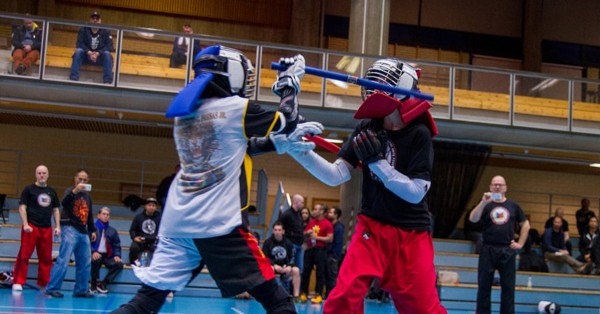The Flow concept is one of the cornerstones of the Filipino Martial Arts. Many exercises and drills are designed to create this rather mysterious state. This article outlines what this is all about.
Strike, defense, counterattack - the sticks are moving at lightning speed. Specific motions are hardly recognizable. Anyone who sees a true master of Filipino Martial Arts in action for the first time will hardly believe their eyes. Nevertheless, the execution looks easy and playful. Like there's nothing to it. This flow of movements can be observed in many sports. But it's a unique feature of Arnis, Kali and Escrima that this skill is purposefully tought in training.
What is the flow?
In Filipino Marial Arts, the term "flow" is used to describe a state of seemingly effortless movement. The concept is of central importance. Nevertheless, it is not so easy to put into words what exactly it means. Dan Inosanto, Bruce Lee's companion, wrote in his book The Filipino Martial Arts in 1980:
Combatively, the flow is like a flash flood in the desert. It moves to the places of least resistance and overwhelms them with sheer unchallenged momentum. In escrima and kali, the body moves like that while the weapon, particularly the stick, ricochets from hit to hit, accentuated whenever possible by the momentum of the fighter’s body.
For beginners, this is hardly comprehensible at first. They are mainly concerned with learning the basic techniques. That is actually necessary. A flow state can only be achieved if the various motions are safely controlled. This can be compared to a child learning to cycle or swim. First of all, it is difficult to coordinate your body parts. But all of a sudden it works. You just don't know why that's happening right now.
The Psychology of Flow
Every human being knows such moments in which they are one with themselves, the world and what they do. But only a few are able to bring about this condition in a systematic way. The Hungarian-American psychologist Mihaly Csikszentmihalyi has observed surgeons and extreme athletes. For these professionals, performing precise movements under great pressure is everyday routine. In order to be able to achieve this in the first place, the experts put themselves into a kind of creative enthusiasm.
In his book Flow the man with the unspeakable name founded the scientific flow theory. In an interview in 1995, Csikszentmihalyi described the flow state as a complete merging into present activity:
The ego falls away. Time flies. Every action, movement, and thought follows inevitably from the previous one, like playing jazz. Your whole being is involved, and you're using your skills to the utmost.
The Flow in Escrima, Arnis and Kali
A martial artist is in flow when he performs his motions in a playful way. Simply because they create joy out of themselves. It is no longer a question of achieving specific goals. For example, you don't try to land a hit or trick your partner. On the contrary, that would even interfere. As long as conscious thinking intervenes inbetween the movements, true virtuosity remains unattainable.
The key to learning this skill is a good teacher. The watchful trainer corrects structural errors in the technique and sets the rhythm of the exercise. Speed and intensity must demand the student's full attention. But the pressure must not be overwhelming. Then the novice learns to trust his own instincts. The technique begins to flow. At first, just for a few moments. However, as experience grows, they become longer and longer.
Structured training allows for flowing
Flow moments cannot be forced. But the ability to achieve them can be developed with continuous practice. It's a bit paradoxical: Free flow is only possible if you master the movement in detail. Nevertheless, you have to let go of conscious control in order to really get into the flow state. To do this, certain requirements must be met in class:
- Clear goals: What exactly is supposed to be trained with this exercise?
- Competence: The basic technique and the drill are already known.
- Control: The motion sequence can be executed without error and without thinking.
- Concentration on the activity at the moment. No distractions or wandering thoughts.
.
It's not as complicated as it sounds. The Filipino Martial Arts provide an infinite variety of drills to practice the flow. The most well-known are the Sinawalis, which are executed with two sticks. Flow states can also be achieved in casual sparring. A healthy mixture of repetition and free variation gradually allows the body to function on its own. The mind becomes an observer and is pleased with what it sees. Until a mistake happens - and everything starts all over again.
Did you like this article? Follow Fightingsticks on Facebook and Pinterest.
Photo: World Kombatan Championchips in Pori, Finland (January 2018), © Kombatan Finland


